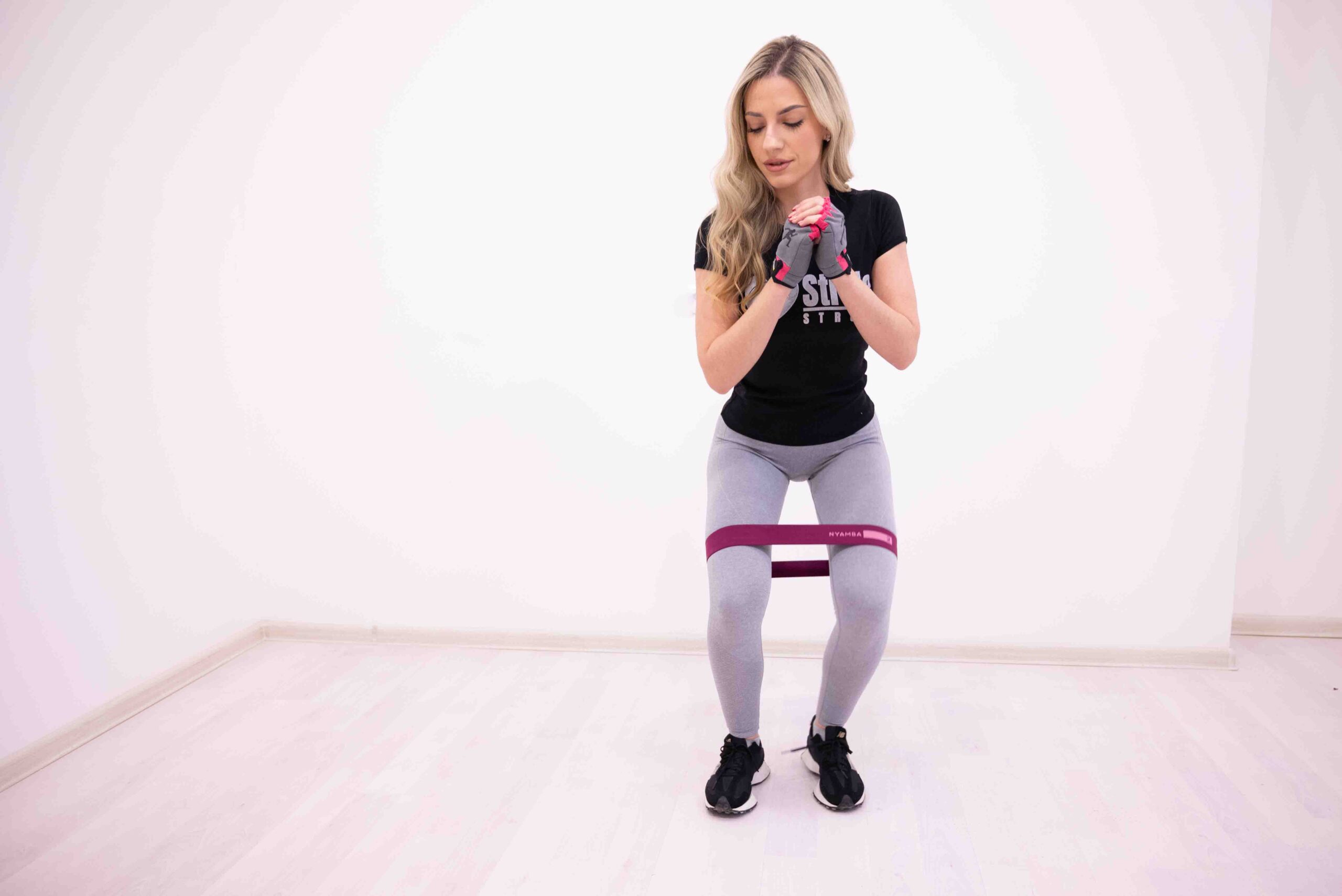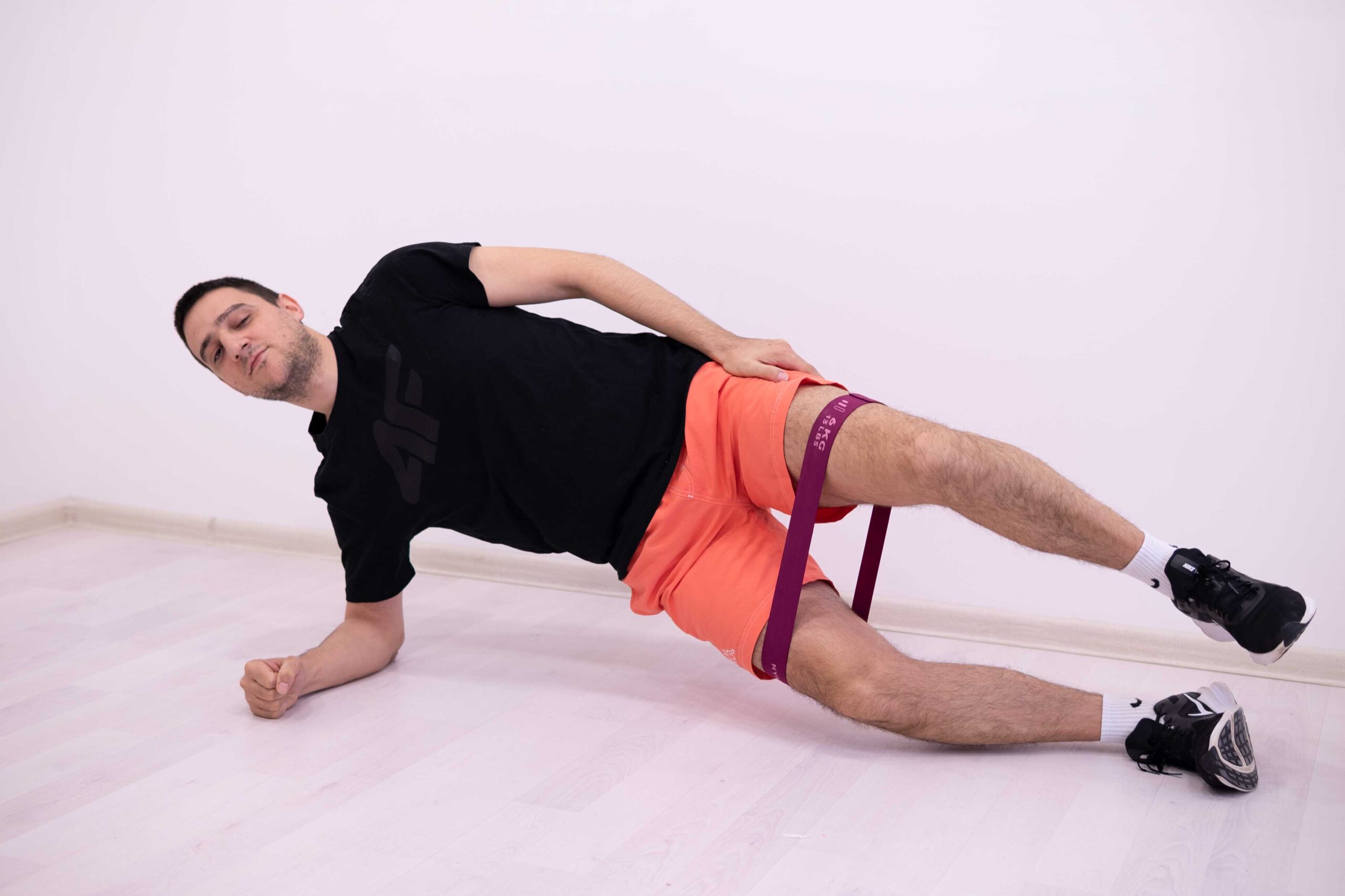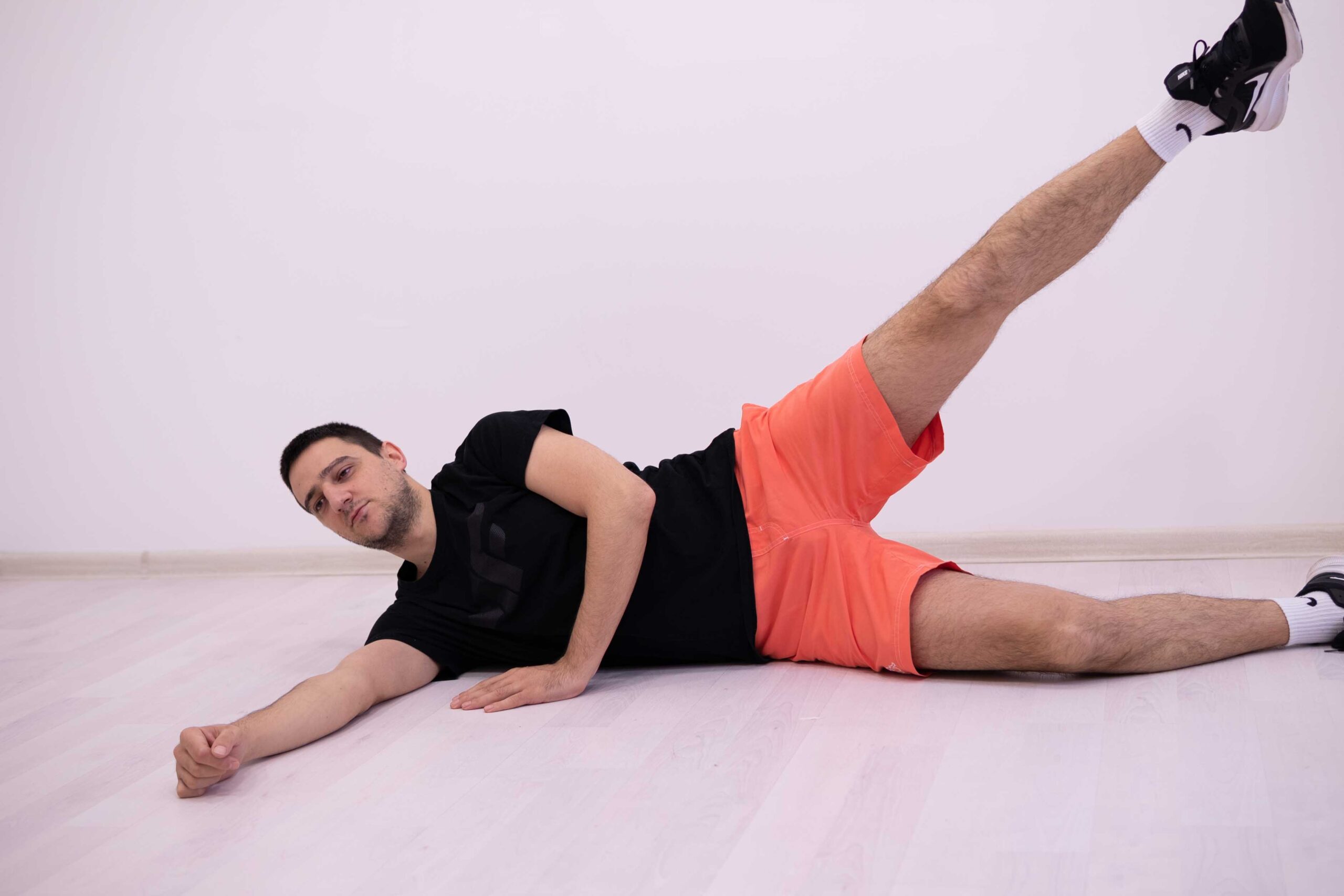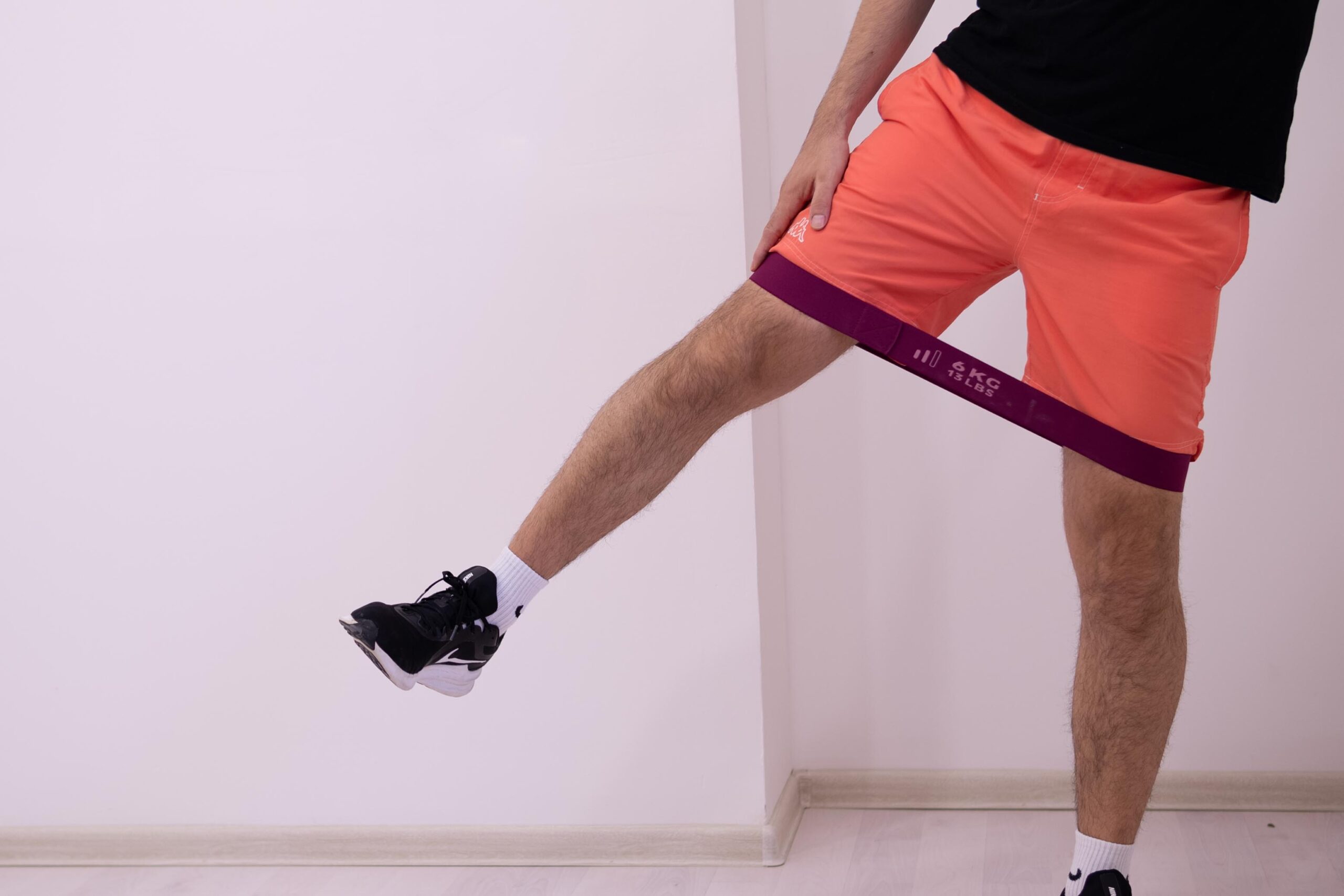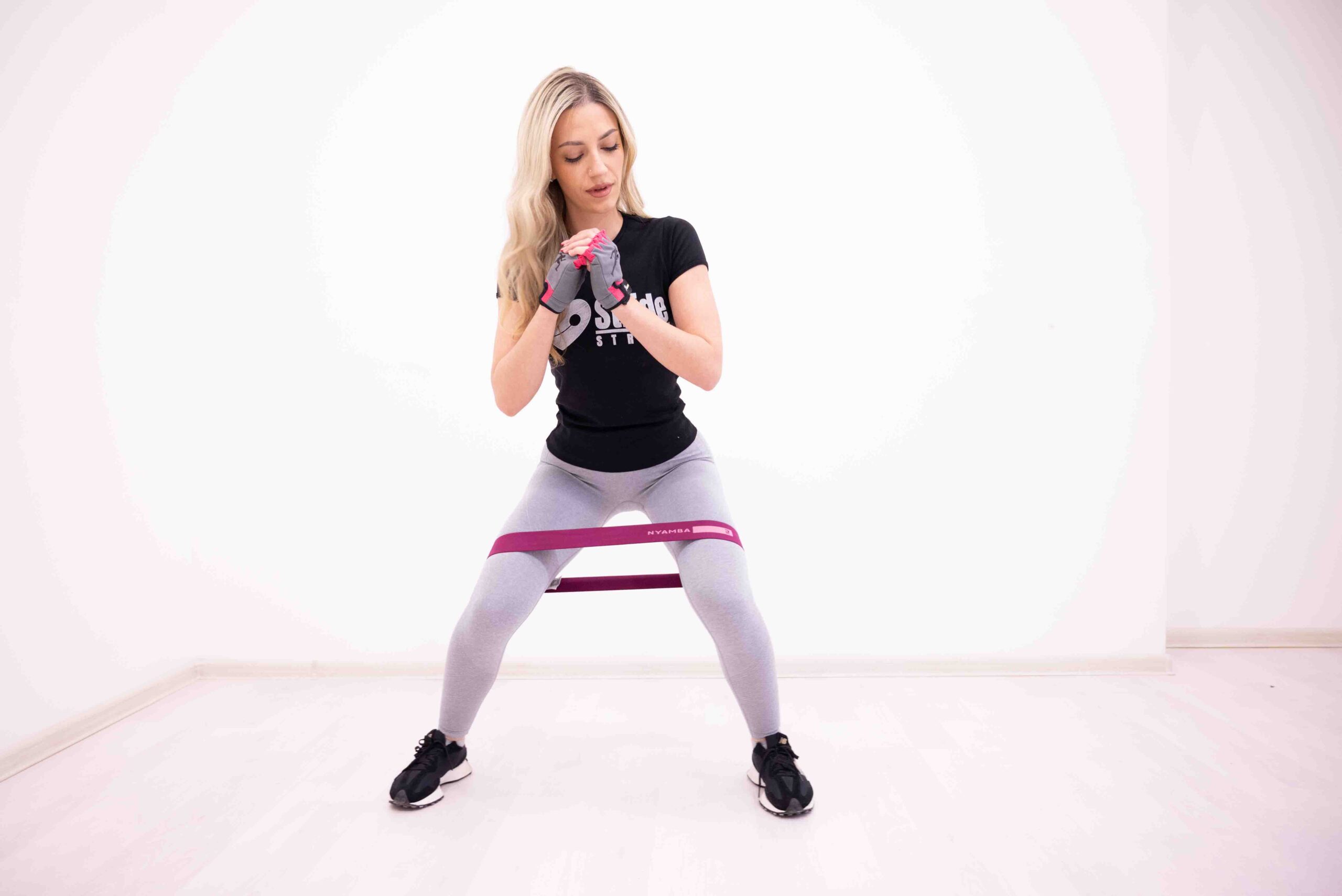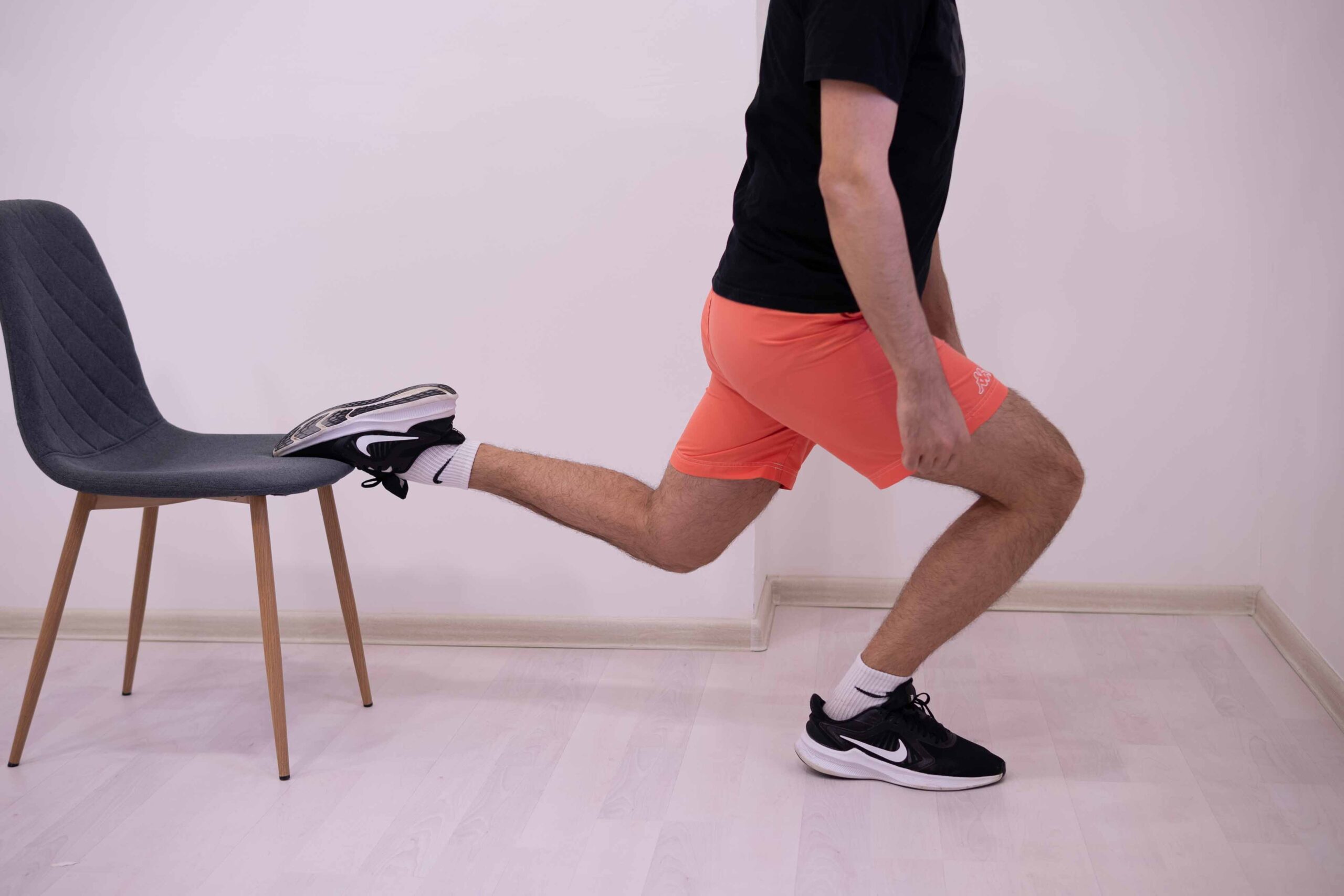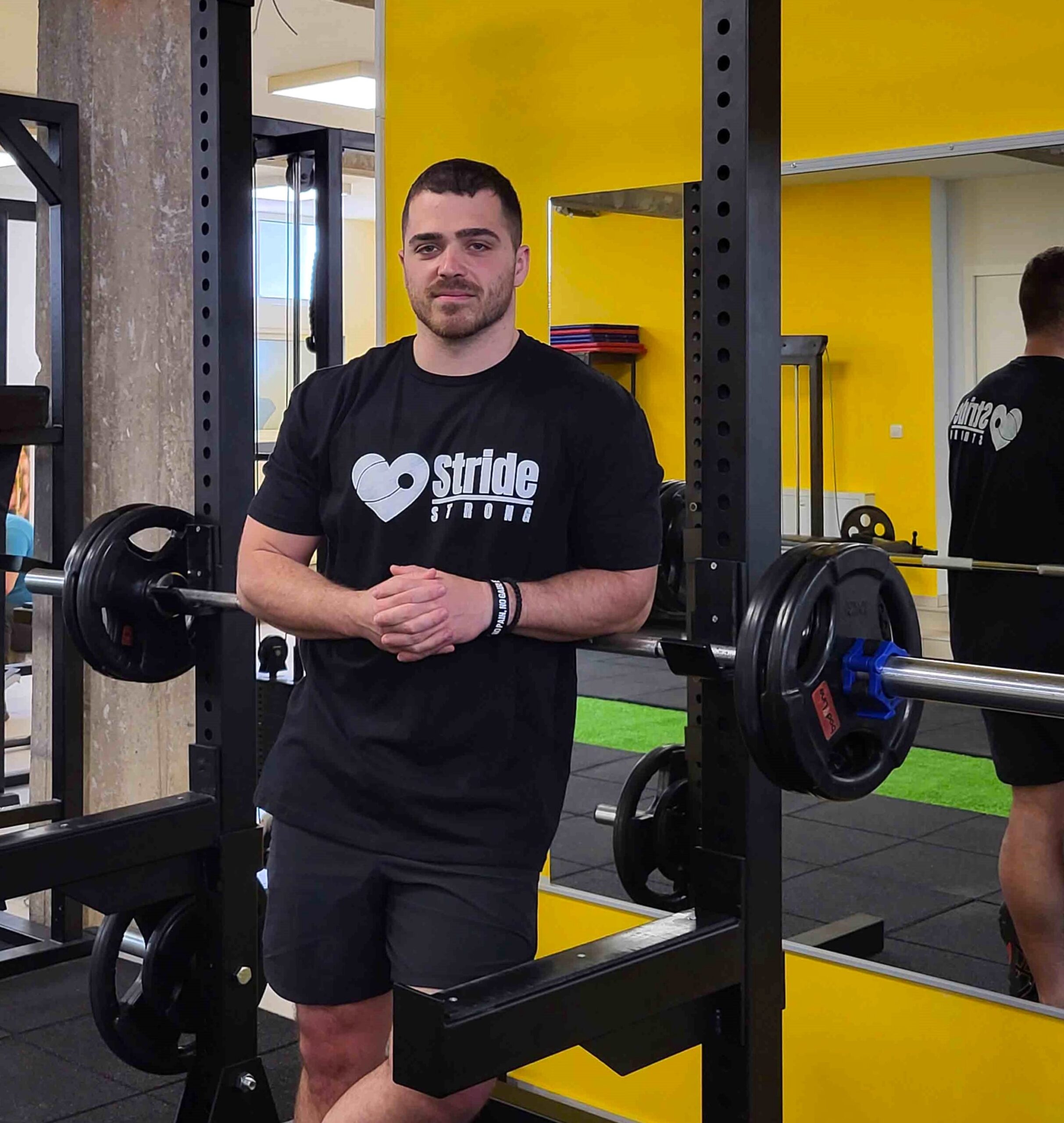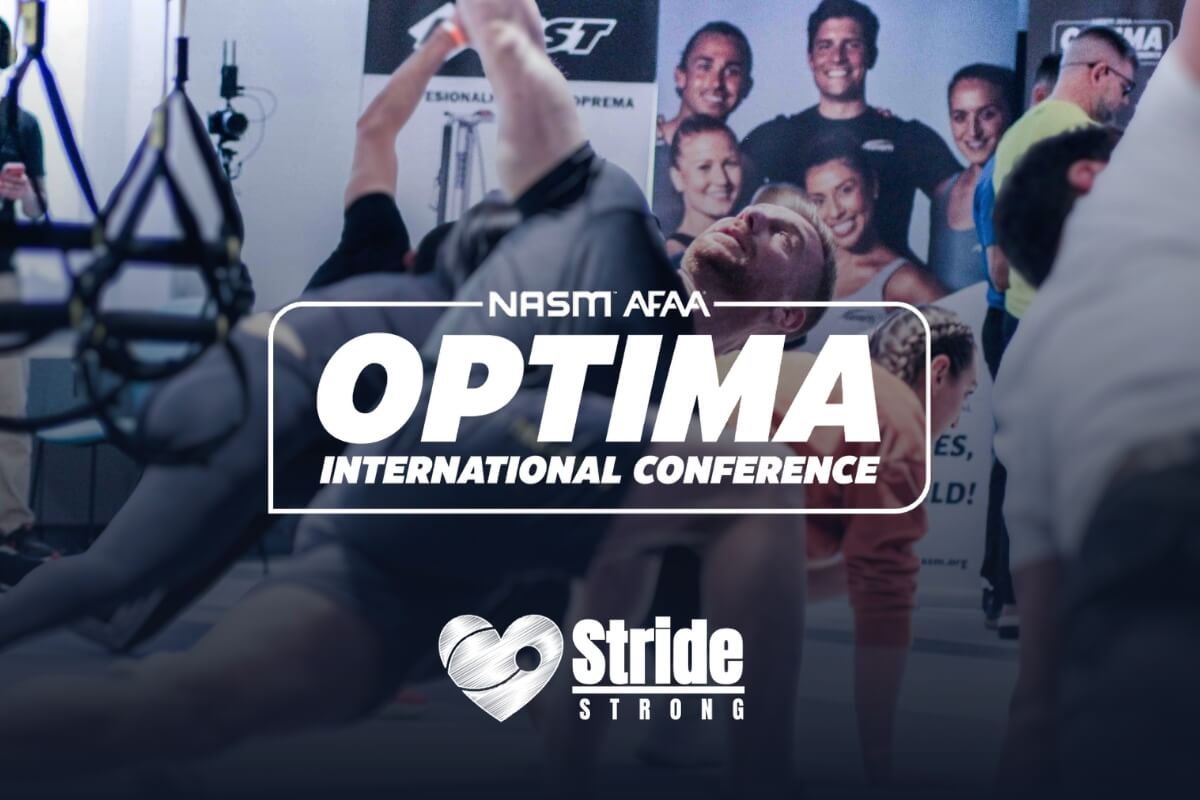Ever caught yourself admiring a toned derrière or wondered how athletes maintain their explosive power and agility? A secret powerhouse behind these attributes is the gluteus medius.
This muscle, often overshadowed by its more famous counterpart – the gluteus maximus, plays a vital role in hip stabilization and movement.
Today I’ll give you seven proven exercises that target this muscle ensuring stability, strength, and power to your every step.
1. Clamshells
The clamshell exercise is a classic move for targeting the gluteus medius. It helps in improving hip mobility and strengthening the glutes without putting too much strain on the knees or lower back.
Benefits
The clamshell exercise promotes hip stability and prevents potential injuries, especially for runners. When performed correctly, you’ll feel the burn on the upper part of your buttocks, signaling the activation of the muscle.
How to do It?
- Begin by lying on your side with your legs bent at a 90-degree angle and your feet together.
- Keep your hips stacked and ensure that you’re not rolling back.
- Engage your core, and without moving your feet, lift your top knee as high as you can without moving your pelvis. Lower it down gently.
- Repeat for the recommended reps and switch sides.
2. Fire Hydrants
Fire hydrants are a dynamic move that not only targets the gluteus medius but also improves hip mobility and strengthens your core. I feel so good after doing these!
Advantages of Fire Hydrants
This exercise mimics our natural movement patterns, making it excellent for functional fitness. As you lift your leg, the gluteus medius engages to stabilize the pelvis.
This not only strengthens the muscle but also improves overall hip function, reducing the risk of related injuries.
Step-by-step Guide
- Start in a hands-and-knees position, with your wrists aligned under your shoulders and knees under your hips.
- Keeping your knee bent, raise your right leg out to the side, parallel to the ground, as if you’re a dog at a fire hydrant.
- Lower it back to the starting position. Make sure to engage your core throughout to prevent your back from arching.
- Repeat on the other side.
3. Side Leg Raises
Side leg raises are simple yet highly effective in isolating the gluteus medius, making them a staple in many fitness routines.
Benefits of the Exercise
Besides targeting the muscle, this exercise also engages the obliques and core, promoting balanced strength in the pelvic region. Regularly including side leg raises in your routine can assist in correcting muscle imbalances, especially if you spend long hours sitting or have an inactive lifestyle.
How to do Side Leg Raises
- Lie on one side with your legs extended straight. Rest your head on your arm or hand.
- Keeping your foot flexed and your body in a straight line, lift the top leg towards the ceiling without moving the rest of your body. Lower it down without letting it touch the bottom leg.
For an added challenge, you can use ankle weights.
4. Single-Leg Bridges
A modification of the traditional bridge, the single-leg variant takes the challenge up a notch, ensuring maximum engagement of the gluteus medius.
Advantages
This exercise goes beyond just the gluteus medius. It offers a comprehensive workout for the entire posterior chain, from the hamstrings to the lower back.
As you lift and balance on one leg, the gluteus medius activates to stabilize the pelvis, proving its effectiveness in targeting this often overlooked muscle.
How is It Done?
- Lie on your back with your knees bent and feet flat on the floor.
- Extend one leg straight up towards the ceiling.
- Press through the heel of the grounded foot, lifting your hips off the ground. Ensure your body forms a straight line from shoulders to knees.
- Lower your hips gently back to the ground and repeat.
- Don’t forget to switch legs!
5. Standing Hip Abduction
Standing hip abduction not only improves the strength of your gluteus medius but also enhances balance and posture.
Benefits of Standing Hip Abduction
This exercise has a dual benefit: it strengthens the gluteus medius while challenging your balance. As you lift your leg, the standing leg’s muscle works to stabilize your body, making it a holistic exercise for overall lower body strength and stability.
How to do Standing Hip Abduction
- Stand upright next to a wall or a sturdy surface for support.
- Engage your core, and with a straight leg, lift one foot off the ground and out to the side as high as comfortable. Keep your toes pointing forward and avoid leaning towards the opposite side.
- Lower the leg back down and repeat, then switch sides.
6. Lateral Band Walks
Introducing resistance bands to your workouts can amplify the results, and even though I do not enjoy these that much, they are very effective.
Advantages
The resistance band ensures constant tension, making the gluteus medius work harder. This exercise also targets the quads and other glute muscles, making it a comprehensive lower-body workout.
Regular practice can enhance hip stability, especially beneficial for athletes or those involved in lateral movements.
Step-by-step Guide
- Place a resistance band around your ankles or just above the knees.
- Stand with your feet shoulder-width apart, knees slightly bent.
- Take a step to the right with your right foot, then follow with your left, maintaining tension in the band.
- Take a few steps in one direction, then switch to the other.
7. Bulgarian Split Squats
Last but not least, Bulgarian split squats provide a powerful burn, targeting the gluteus medius and the entire lower body.
Benefits of Bulgarian Split Squats
Apart from activating the gluteus medius, this exercise challenges your balance, flexibility, and overall leg strength. The unilateral nature of the move ensures each leg gets individual attention, helping to correct any imbalances.
How to do the Exercise
- Stand a couple of feet away from a bench or elevated platform.
- Extend one leg behind you and place the foot on the bench.
- Lower your body by bending the front knee until the thigh is parallel to the ground. The knee should be aligned with the toe.
- Push through the heel to return to the starting position and repeat.
- Switch legs after the set.

